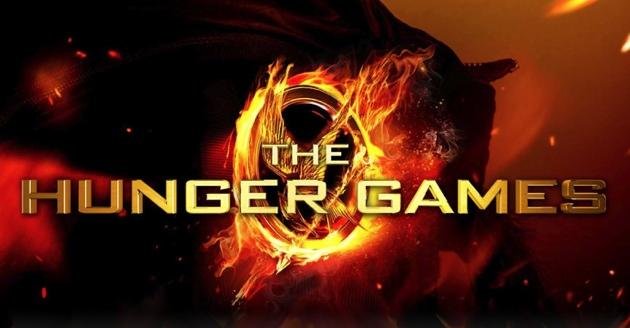Second of a three-part series on the depiction of the United States in YA dystopian and post-apocalyptic fiction.
At first glance, it’s easy to dismiss Suzanne Collins’s powerhouse trilogy, The Hunger Games, as a teenage gladiator-style bloodbath with a little bit of romance on the side or even to get caught up in the whole Hunger Games/Battle Royale endless debacle.
Yet The Hunger Games goes farther than that, and though the references seem Roman in nature – the arenas, the chariots, even the name of Panem – the books make a point out of taking place in the ruins of the United States by weaving into the world of Panem threads of what once made it the strongest nation in the world: from capitalism to a dash of colonialism, from our social structure and common everyday delights to the whole idea behind the American dream.
 The Capitol in the world of The Hunger Games is a place where the rich and famous, the fashionable and the unworried can lose themselves in the oblivion of debauchery and self-indulgence. This place has thrived, unlike the great majority of the other 12 living districts, because it is the one in power. The Capitol capitalized in each of the individual products and skills that signified progress for each district and made an industry out of it, reaped the benefits as owner of the work of entire communities, kept the majority of the income to itself and gave the workers the bare minimum.
The Capitol in the world of The Hunger Games is a place where the rich and famous, the fashionable and the unworried can lose themselves in the oblivion of debauchery and self-indulgence. This place has thrived, unlike the great majority of the other 12 living districts, because it is the one in power. The Capitol capitalized in each of the individual products and skills that signified progress for each district and made an industry out of it, reaped the benefits as owner of the work of entire communities, kept the majority of the income to itself and gave the workers the bare minimum.
The products from some of the districts, like luxury items from District 1 and Weaponry from District 2, are more coveted by The Capitol, and thus those particular districts are the wealthiest and enjoy more liberties than other districts whose products are not as coveted, like Katniss’s own District 12 and its coal mines. This is pretty much how capitalism works: there is an industry, someone makes a corporation out of its products and the demand on the product reflects on how well-off those involved in the industry fare. The very idea of capitalism, the economic movement that defines the U.S., is the idea of ownership for profit.
Ideally speaking, everyone has the right to own something for profit in our economic system, but in THG, just a single person owns the entire economy and has reserved for himself the right to capitalize on the products of each district. The Capitol displays capitalism taken to the extreme, portraying the result of withholding the right to ownership for profit only for the elite. The case is not so extreme in our reality, but the benefits of capitalism are usually reaped in the same manner by those in the upper rungs of the social structure within our society. The whole idea behind the concept is that we all have the same right, but the power to make it happen resides in the hands of those at the economic and social summit of our society.
Capitalism in THG is so extreme that its power is no longer concentrated solely on products, but also extends to the district itself, resulting in a terrible merge of capitalism and colonialism that gives way to the oppression that defines the plot of The Hunger Games. In fact, the whole idea of the games is not only to oppress the districts into compliance, but also to remind them not to rise against The Capitol. One could almost say this punishment for The Dark Days and the obliteration of District 13 with nuclear weapons can be also viewed as a war on terrorism from the point of view of The Capitol. It is the very idea of repeating the threat of another war what mostly keeps the districts in check, an idea that is not unknown to American culture.
The elite of Panem, those living in The Capitol, are no different than the tabloid socialites our American culture worships. Life in The Capitol is luxurious and superficial self-indulgence: people dress in bright, gaudy styles to represent their high social standing, constantly indulge in extreme plastic surgeries to keep up with fashion and, to Katniss’ horror, spend absurd amounts of money on trivialities that could feed entire families in the lower districts.
More importantly, they are all oblivious to the suffering in the Districts. Beauty culture and trashy reality TV are undeniably American, and it is all exemplified within the elite in The Capitol. They have become desensitized to the world – even when they watch it live in all its bloodthirsty and horrifying glory – because they live in the safety of their luxury, because there is no chance that it will be them, because their societal structure has dictated that they are far more valuable than the lives lost in the games. And they watch and they enjoy seeing others struggle to get to where they are, they watch others fight with nails and teeth for their life, a twisted version of the American dream: a life of security bought with money and fame, a disturbing take on the famous American phrase “Get rich or die trying.”
Many of the concepts within the pages of The Hunger Games are not strictly American and could easily apply to other cultures and countries. But it is the fact that this one takes place in the ruins of the U.S. – a place vaguely referenced to have brought on its doom because of the many wars it had waged – and the careful nods to American culture through the entire trilogy, that make one realize that there is indeed a message within the pages of this novel and it is one that concerns us deeply as members of this country.
Though I doubt the future will have us battling gladiator-style for the entertainment of the elite, it wouldn’t hurt to take this trilogy seriously and consider that maybe the book really has a point.
Lorraine Acevedo Franqui writes for Girl In Capes from Puerto Rico and holds degrees in English Literature and Psychology. Her main interests are young adult lit, anything related to The Legend of Zelda and Kingdom Hearts, assorted shounen mangas and cats.






“Capitalism in THG is so extreme that its power is no longer concentrated solely on products, but also extends to the district itself, resulting in a terrible merge of capitalism and colonialism that gives way to the oppression that defines the plot of The Hunger Games. In fact, the whole idea of the games is not only to oppress the districts into compliance, but also to remind them not to rise against The Capitol. One could almost say this punishment for The Dark Days and the obliteration of District 13 with nuclear weapons can be also viewed as a war on terrorism from the point of view of The Capitol.”
I love everything about your analysis, and this most of all. The Capitol has always felt to me like a logical extension of what could happen in America under Collins’ given circumstances, and this is, in turn, seems a logical extension of American capitalism in that universe.
One of the things that’s always intrigued me about THG is Collins’ decision to build Panem in the ruins of North America as opposed to building them in an explicitly named country. It’s clear the US is the dominating governmental/cultural/societal force behind Panem, but inherent in that force placed in a greater North American setting is that Mexican and Canadian influence is somewhere between minimal and nonexistent.
It makes me wonder if the US was just better prepared to deal with an apocalyptic scenario, Canada and Mexico were lost to rising sea levels, or, most intriguingly, the power of the two was significantly minimized by the US as Panem came into fruition. When you apply your analysis to an all-bets-are-off scenario like the one that would’ve had to have happened to distinguish contemporary North America from Collins’ Panem, I wouldn’t be surprised at all if, in the United States’ dealings with Canada and Mexico, Panem’s tradition of capitalism-cum-colonialism began.
tl;dr: I have a lot of feelings about international relations and wish we could get an in-depth look into the world-building of Panem.